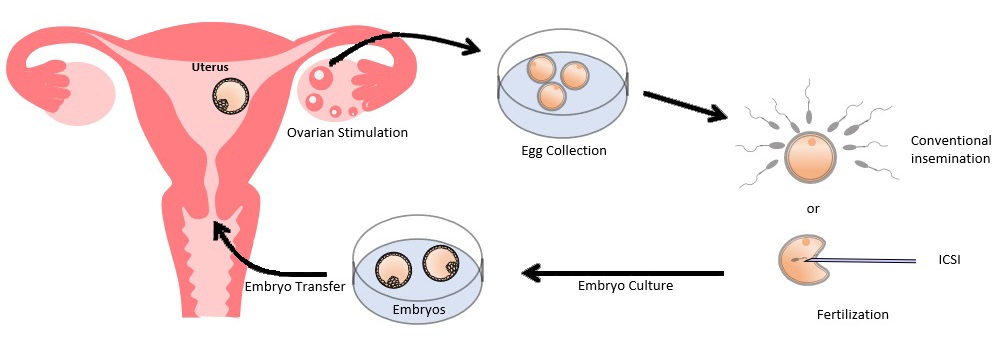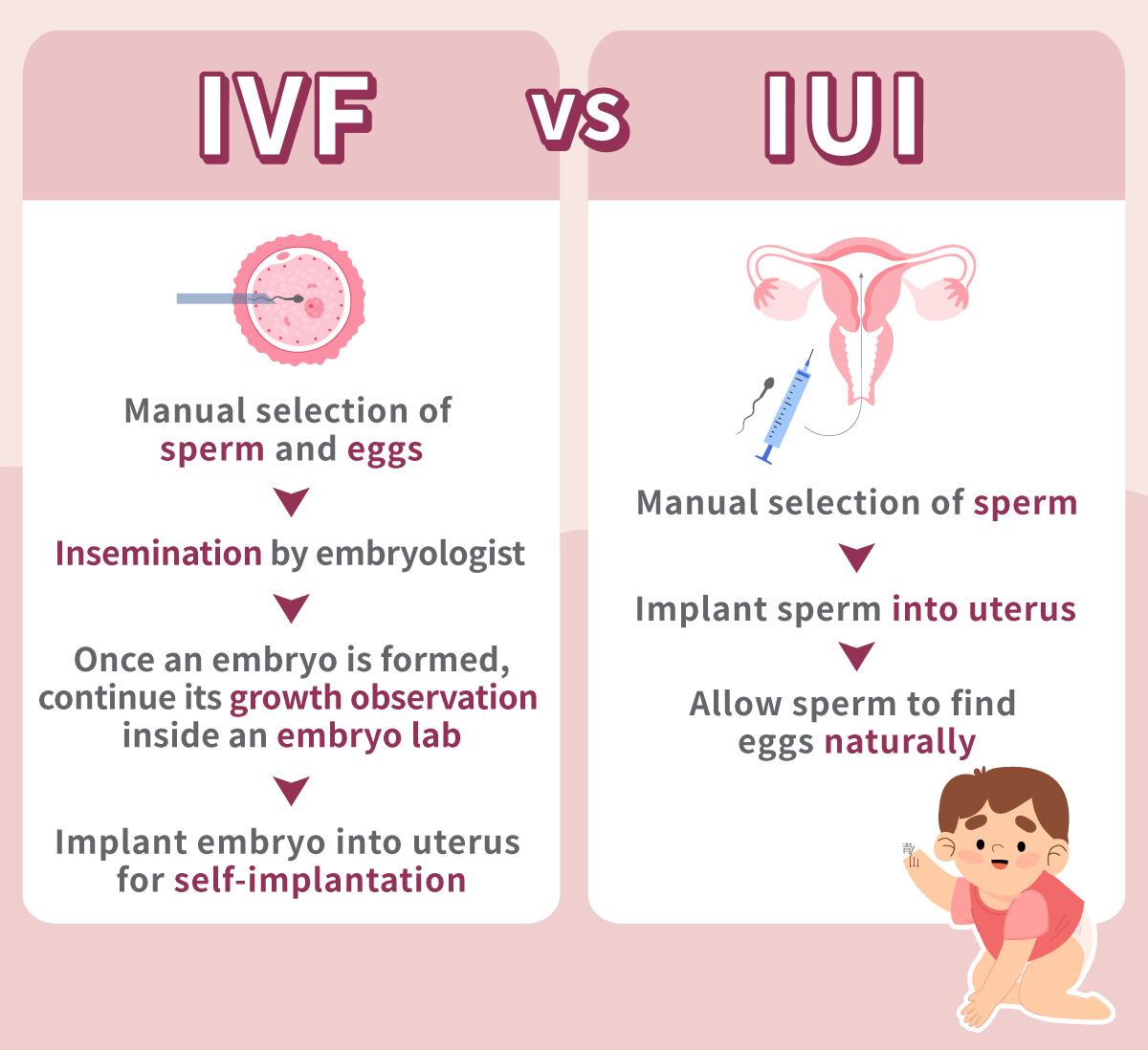Table of Contents
When a couple is facing difficulties getting pregnant, one of the most common decisions is choosing between IUI (Intrauterine Insemination) and IVF (In Vitro Fertilization). Both are medically proven fertility treatments, but they are quite different in terms of procedure, success rate, cost, and who they are best suited for.
This blog will explain the difference between IUI and IVF in simple terms and help you understand which treatment might be right for your situation.
What is IUI?
IUI, or Intrauterine Insemination, is a simple and less invasive fertility procedure. In this treatment, the male partner’s sperm is washed and concentrated, then inserted directly into the woman’s uterus around the time of ovulation. The goal is to increase the number of sperms that reach the fallopian tubes and improve the chance of fertilization.

What is IVF?
IVF, or In Vitro Fertilization, is a more advanced and complex fertility procedure. In IVF, eggs are retrieved from the woman’s ovaries after hormonal stimulation. These eggs are then fertilized with sperm in the embryology laboratory. The resulting embryos are monitored for a few days, and one or more healthy embryos are transferred back into the uterus for implantation.
IVF bypasses many natural steps of conception and is recommended when other simpler treatments fail or are unlikely to succeed.

How Do the Procedures Work?
IUI Process:
-
- Ovulation is tracked using ultrasound and sometimes blood tests.
-
- Fertility medications may be given to boost egg release.
-
- Near the time of ovulation, sperm is collected and processed.
-
- The sperm is inserted into the uterus using a thin catheter.
-
- No anesthesia is required, and the procedure takes only a few minutes.
IVF Process:
-
- The woman takes hormone injections to stimulate the ovaries.
-
- Multiple eggs are matured and retrieved under short anesthesia.
-
- Eggs are fertilized with sperm in the laboratory.
-
- Embryos are monitored and graded.
-
- One or two embryos are transferred to the uterus after 3–5 days.
-
- A pregnancy test is done after two weeks.
Who Should Consider IUI?
IUI is usually suitable for:
-
- Couples with mild male factor infertility (low sperm count or motility)
-
- Women with ovulation problems
-
- Unexplained infertility
-
- Single women or lesbian couples using donor sperm
IUI is not recommended for women with blocked fallopian tubes, severe endometriosis, or low ovarian reserve.
Who Should Consider IVF?
IVF is usually recommended for:
-
- Women over 35 with declining fertility
-
- Women with blocked or damaged fallopian tubes
-
- Moderate to severe male infertility
-
- Couples who have failed multiple IUI cycles
-
- Couples needing donor eggs or sperm
-
- Genetic disease concerns requiring embryo testing
-
- Women with endometriosis or polycystic ovary syndrome (PCOS) not responding to other treatments
Success Rates: IUI vs IVF
The success rates for both IUI and IVF depend on the age of the woman, sperm quality, egg reserve and the reason(s) for not conceiving. IVF usually has 3-4 times higher chance of success compared to IUI.
-
- IUI success rate varies from 5–15% per cycle for women under 35. It is higher when injections are used for ovulation induction.
-
- IVF success rate ranges from 30–50% per cycle for women under 35.
For women over 35, the success rates of both IUI and IVF decline proportionately.

Cost Comparison
IUI is much more affordable than IVF:
-
- IUI cost in India ranges from ₹8,000 to ₹25,000 per cycle. The cost is more with injections.
-
- IVF cost in India ranges from ₹90,000 to ₹2,50,000 per cycle, depending on medications used, lab procedures, and optional procedures like ICSI and embryo freezing.
However, while IUI is cheaper, multiple failed cycles may end up costing more than one successful IVF cycle.
Time, Effort, and Emotional Load
IUI is quick, non-invasive, and requires fewer clinic visits. It does not involve surgery or anesthesia and is emotionally less demanding.
IVF requires daily hormone injections, egg retrieval surgery, and several visits to the clinic for monitoring. It also involves more physical and emotional stress due to the intensity and expectations involved.
Risks and Side Effects
IUI is generally safe with minimal side effects. It may cause mild cramping or spotting. The main risk is the possibility of multiple pregnancies if multiple eggs grow due to ovulation induction.
IVF involves stronger ovarian stimulation to produce multiple eggs. The injections may cause mild side effects like headache, abdominal bloating or mild discomfort, but these are temporary and resolve on their own. Rarely, ovarian hyperstimulation syndrome (OHSS) may occur particularly in women with PCOS. Egg retrieval is painless as it is done under anaesthesia. The chance of having twins or triplets depends on the number of embryos transferred, and therefore it is avoidable.
When to Move from IUI to IVF
Most doctors recommend trying IUI for up to 3–4 cycles. If there is no success, IVF is the next step. In some cases, such as blocked tubes or severe sperm issues, doctors may skip IUI and suggest IVF directly.
Which Is Better for You?
If your fertility problem is mild and you’re under 35, IUI is a good starting point. It is less costly, easy to undergo, and has a decent chance of success in properly selected couples.
If you’re over 35, have known fertility issues, or have tried IUI without success, IVF gives you a higher chance of success and more control over the process.
Final Thoughts
Both IUI and IVF have helped millions of couples worldwide. The right choice depends on your age, fertility diagnosis, emotional readiness, financial budget, and personal preference.
Always consult a fertility specialist who will evaluate your condition and guide you with the best treatment plan. Fertility treatment is a journey, and the first step is to understand your options.



